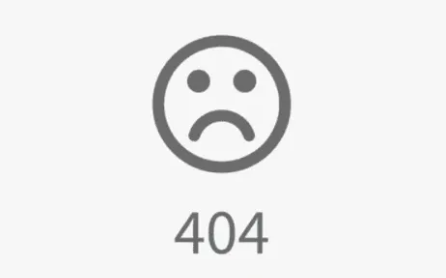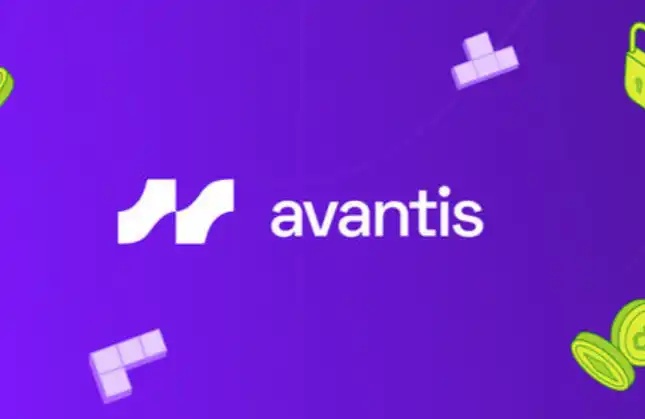Technical details and reasons behind ETH Merge and ETC migration
Original title: " Several technical details and reasons behind ETH Merge and ETC migration "
Original source: @0xTodd, Partner at Nothing Research
First of all, does ETH have the conditions for a fork?
Basically not, because the value of the ETH network is not only the currency Ether, but also the token on it. If you keep the PoW fork, you can only say that the new Ether currency may still have some value, but USDT, USDC, etc. are basically worthless, because if you are Tether or Circle, you must choose to go with V God.
What is the Merge process like?
If roughly divided, ETH can be divided into two layers: the consensus layer and the execution layer. The former is similar to the leaders in the enterprise, and the latter is similar to the employees in the enterprise. A batch of new leaders (PoS nodes) will be airborne, and the old leaders (PoW miner nodes) will be exchanged, but the employees (EVM) will still be the previous employees, because they are only responsible for execution. So, as a user, you don't feel a difference.
So what if PoW refuses to upgrade the client?
Someone may ask, what if the old leader occupies the office and does not leave? Refer to Rivasya, the public servant of the people. The previous president just refused to leave. The difficulty bomb is to solve this problem. In theory, if PoW refuses to upgrade the client, then the ETH PoW chain will become harder to dig. From the current 13 seconds per block, it will gradually increase to tens of seconds or hundreds of seconds.
What happens if you dig slowly?
So everyone knows that in a distributed system, the longest chain is the legal chain. In the case of a difficulty bomb, the old client cannot beat the new client. The PoS ETH standard has a block of 12 seconds, which is fixed, so the TPS also increases slightly.
So old PoW miners can’t upgrade to the new client for hard mining?
No, because there was a field called "ommers" in the ETH block, and this field was adjusted to 0. In addition, the original difficulty field has been changed to random. It means that there will be no block difficulty in the future, and blocks will only be randomly generated among verifiers.

 Wait a minute, how did this random generation come about?
Wait a minute, how did this random generation come about?
You deposit 32 ETH, you can be a validator (validator). Then, every 12 seconds, the whole network randomly selects a healthy node to package blocks (in the past, it was the fastest hash calculation in the whole network, so the KPI of the consensus layer has also changed).
Is this random really random?
Unfortunately, it's not really random. Although the hash of the blockchain is often used for lottery, in fact, such a distributed system cannot generate true randomness, because miners can control the generation of hash.
How to solve the random number problem?
So, ETH is also thinking of a way. In the fifth stage of splurge after ETH's merge, Ethereum will adopt VDF technology (Verifiable Delay Function) , then the real random number will come at your fingertips, which will completely solve the random problem of PoS node selection.

Will there be a mining pool in the future?
I think there are still, and now there are 41w nodes on PoS ETH. That is to say, on average, if you have 32 ETH, every 56 days (41w*12 seconds) can randomly generate a block on your head. And everyone has learned probability theory, this 56 days is just the expected value and there is no guarantee. Therefore, it is a good choice to join the mining pool and share money together.
What is the annualized rate of participation in ETH PoS mining?
In general, everyone expects it to be about 5%, but it may reach about 9% including the handling fee. The general rule is that the more the total amount of Stake ETH, the higher the total output, but the less income distributed to each validator, this curve is nonlinear.


Say back Fork, if you insist on forking, what should you do?
First take a snapshot, then restore those deleted fields, and then trick the miners into joining. Miners really have no place to go, but if the token income of the new chain cannot cover electricity costs and depreciation of graphics cards, it will not be sustainable.
How much are the coins in the new chain worth?
Frankly, it depends on the exchange. If the exchange is willing to list the currency, then even if the project is made into shit, someone will pay for it. I hope the exchanges will remain upright and calm. Referring to BCHA, there is no father, but because it is listed on the exchange, there is still a price. If the new chain token is not listed, then its value will be very limited, and the miners will be shut down soon.
What about ETC? Will miners go to ETC?
Definitely. But capacity is very limited.
Always remember that the price guides the computing power, not the computing power guides the price. Bitcoin is powerful, not because there are many miners who support it, but because Bitcoin is valuable, so miners are willing to support Bitcoin, so that they can pay electricity bills. Otherwise, BCH would have flipped BTC a long time ago, after all, there were so many miner fathers back then.
ETC capacity is limited, so how much is there?
ETC computing power is 25 TH/s, ETH is 924 TH/s, about 1:37. Now the price of ETC is 32, and the price of ETH is 1600, which is about 1:50. So the capacity is really small. If you squeeze in hard, the payback period will be very long. The power consumption of the ETH graphics card mining machine is not as high as that of Bitcoin, so the price of the shutdown currency is not as high as that of BTC. You can squeeze ETC hard to mine ETC, but it is too expensive.


;
Unless...
Unless ETC can rise to four digits, then ETH computing power can be fully cut in, and the payback cycle remains unchanged.
But...
Yes, there must be but, this is a chicken and egg problem. The currency price guides the computing power. If the currency price does not go up, the computing power cannot come.
So why ETC?
To be reasonable, ETC is the real ETH (just kidding). But u1s1, it is true that ETH is the forked chain. The original V god made is ETC, so it is called classic. Because of the DAO incident, if you are interested, you can check it yourself. ETC is determined to roll back a hacker’s transaction, so ETH was born.
Is there EVM on ETC? Is there DeFi?
Yes; yes.
ETC's EVM is exactly the same as ETH, after all, the two used to be one. It’s just that the ETC network is easily attacked, so the DeFi ecosystem has been tepid. Now the TVL of the entire ETC network is about hundreds of thousands of dollars, mainly because there are two Swaps, which can be said to be small.

Why is ETC attacked?
Because it uses the same mining machine as ETH, and computing power can be rented on some platforms. Therefore, as long as a hacker rents 1% of ETH's computing power, he can easily reach the threshold of 51% attacking ETC. Moreover, attacks against ETC have indeed occurred many times in the past.
How did the attack happen?
This is the basic knowledge of the PoW blockchain, called double spending. For example, I use 100 ETC to buy one of your antique vases. Then lease the computing power to regenerate the block, and then let the regenerated block not include the "I transfer your money" transaction, and then become the longest chain. Then my ETC has not been transferred to you, then my ETC and antique vase are in my hands, and you will suffer a blood loss.
How much does an attack cost?
If you go to Nicehash to rent computing power, it will cost about 20-30 BTC to attack ETC for a whole day. So, if you dare not engage in DeFi on it, who can tolerate a blockchain that rolls back frequently? At present, the ETC recharge of the exchange requires hundreds of block confirmations, but I think hundreds of confirmations are actually not enough.
A large amount of computing power poured into ETC what will bring
The fundamentals are improving. If a large amount of computing power pours into ETC, it will be really good for ETC. But the premise is that someone must pay for it in the secondary market.
You will find that we have entered a strange cycle. If you want to pay for the secondary market, you must have an ecology; if you want to have an ecology, you must be safe; if you want to be safe, you must have high computing power; if you want to have high computing power, the secondary market must pay for you.
PS: This is basically the same as the logic of the ETH PoW fork, there is not much difference (mainly because I can have one less thread, haha)
What about attacking ETH? What is the cost?
Attack PoW ETH for one hour, according to https ://51attack.info/ calculates that it needs about 900,000 US dollars. But the problem is that you can't rent that much computing power, you have to buy mining machines. And if you bought 51% of the ETH mining machines in the world, then you are already a big player in ETH, and you don’t need to attack it. So it's mostly based on economic assumptions.
What about attacking PoS ETH? How much does it cost?
This is also the awesomeness of PoS, and it is very difficult to attack it. Because it is PoS, miners are required to stake, and each block ensures that its state is final.
What does it mean that the final state is deterministic?
For example, it’s still ETC. I want to buy your antique vase and pay you, because there is the longest chain principle, you don’t know the payment , whether it is received or not, so its state is Schrödinger's. Although it is shown in the wallet that it has been received, this item may be rolled back.
No, wouldn’t BTC and ETH be safe?
No, the reason why BTC\ETH needs several blocks to confirm is just from the perspective of probability, after several blocks, you want to chase the longest chain It becomes impossible, so it's only 99.9...9% safe, which is discussed in Satoshi Nakamoto's paper. As long as there are enough 99s, it can basically be regarded as safe.
Wait, you made me dizzy...
What is 99.9...9% Safety? It means that I paid you 100 USDT and you received it, but if my mining machine is lucky and digs out N blocks in a row, I can cancel this transaction, but the probability is extremely small That's all. The so-called "final state is deterministic" means to increase the safety probability to 100%!
How does PoS ETH achieve finality?
All nodes in PoS ETH must "stand in line" for each block. Only when a certain block has received 2/3 of the locked ETH votes of the entire network is it valid.
In PoW, it is common for two miners to calculate the probability of a problem at the same time, so they have to compete for the longest chain. But in PoS, it is impossible for two blocks of the same height to get 2/3 votes at the same time. Because 2/3+2/3>1.
So what?
So under the PoS mechanism, once each block is on the chain, it can never be rolled back, it is deterministic. You can always trust PoS ETH, what you see is what you receive, this is the final state, what you see is what you get.
I heard that the ancient PoS had a very flamboyant attack method...
If you are a big player, With 100 million tokens, one day, you sell all 100 million tokens into US dollars.
Afterwards, you start attacking from the block before you sold it, because you (used to) have more tokens, so you can quickly create a new longest block chain, and then cancel the transfer that was sold into US dollars and become the longest chain, then you can get the US dollars and get back the token.
Can this method attack today's ETH?
The current deterministic betting PoS method completely prevents this attack method - because rollback is not allowed.
So what should we do if we want to attack PoS ETH?
With 2/3 of the entire network mortgaged ETH, according to the current price, this is as high as 140 million US dollars, and flash loans are not available, so it is still extremely difficult for hackers High. Moreover, even if hackers get together, ETH also has means to prevent such attacks. You can refer to https://arxiv.org/pdf/2003.03052.pdf< /p>
It takes so much effort, so what do you want to say?
Don't be fooled by the narrative of L1 too much, ETH itself is very scary from theoretical demonstration, to technical realization, to community accumulation, and all aspects are considered Very thoughtful, this is the feeling of trust that a security bottom layer gives people. Of course, no matter how well Bitcoin is doing, even upgrades of Bitcoin are forward compatible. Only such a stable system can be used as the bottom layer of the future world financial system.
So ETH is difficult to subvert, even if the opponent is a big miner.
So ETH to da moon.
Original link
Welcome to join the official BlockBeats community:
Telegram Subscription Group: https://t.me/theblockbeats
Telegram Discussion Group: https://t.me/BlockBeats_App
Official Twitter Account: https://twitter.com/BlockBeatsAsia


 Forum
Forum Finance
Finance
 Specials
Specials
 On-chain Eco
On-chain Eco
 Entry
Entry
 Podcasts
Podcasts
 Activities
Activities
 OPRR
OPRR










